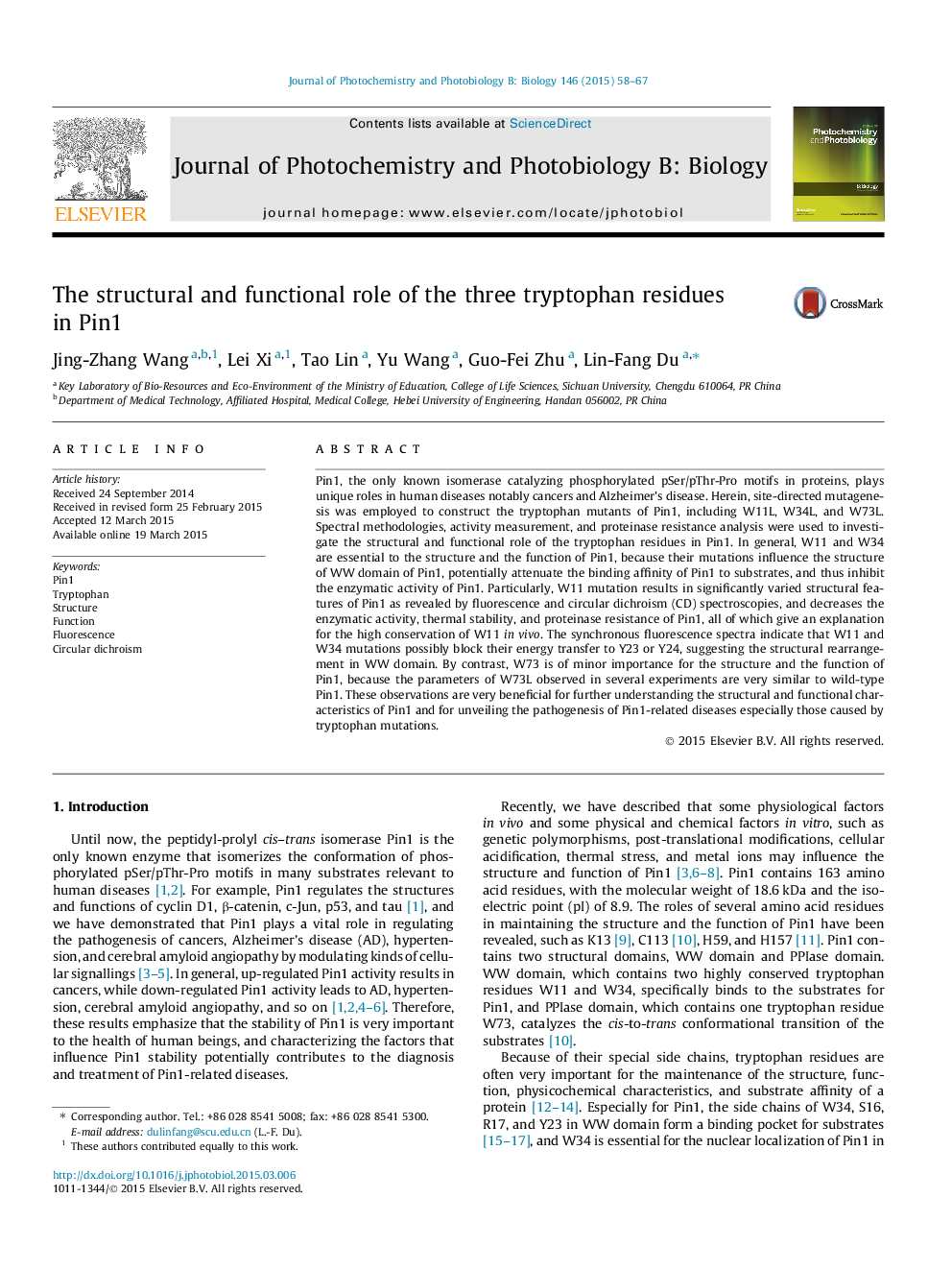| Article ID | Journal | Published Year | Pages | File Type |
|---|---|---|---|---|
| 29401 | Journal of Photochemistry and Photobiology B: Biology | 2015 | 10 Pages |
•The tryptophan mutations resulted in decreased activity of Pin1.•W11 and W34 mutations caused the multiple alterations of Pin1 structure.•W11 and W34 mutations may attenuate the binding affinity of Pin1 to substrates.•W11 mutation also resulted in the decreased resistance of Pin1 to proteinase.•W73 had minor influence on the structure and the function of Pin1.
Pin1, the only known isomerase catalyzing phosphorylated pSer/pThr-Pro motifs in proteins, plays unique roles in human diseases notably cancers and Alzheimer’s disease. Herein, site-directed mutagenesis was employed to construct the tryptophan mutants of Pin1, including W11L, W34L, and W73L. Spectral methodologies, activity measurement, and proteinase resistance analysis were used to investigate the structural and functional role of the tryptophan residues in Pin1. In general, W11 and W34 are essential to the structure and the function of Pin1, because their mutations influence the structure of WW domain of Pin1, potentially attenuate the binding affinity of Pin1 to substrates, and thus inhibit the enzymatic activity of Pin1. Particularly, W11 mutation results in significantly varied structural features of Pin1 as revealed by fluorescence and circular dichroism (CD) spectroscopies, and decreases the enzymatic activity, thermal stability, and proteinase resistance of Pin1, all of which give an explanation for the high conservation of W11 in vivo. The synchronous fluorescence spectra indicate that W11 and W34 mutations possibly block their energy transfer to Y23 or Y24, suggesting the structural rearrangement in WW domain. By contrast, W73 is of minor importance for the structure and the function of Pin1, because the parameters of W73L observed in several experiments are very similar to wild-type Pin1. These observations are very beneficial for further understanding the structural and functional characteristics of Pin1 and for unveiling the pathogenesis of Pin1-related diseases especially those caused by tryptophan mutations.
Graphical abstractFigure optionsDownload full-size imageDownload as PowerPoint slide
